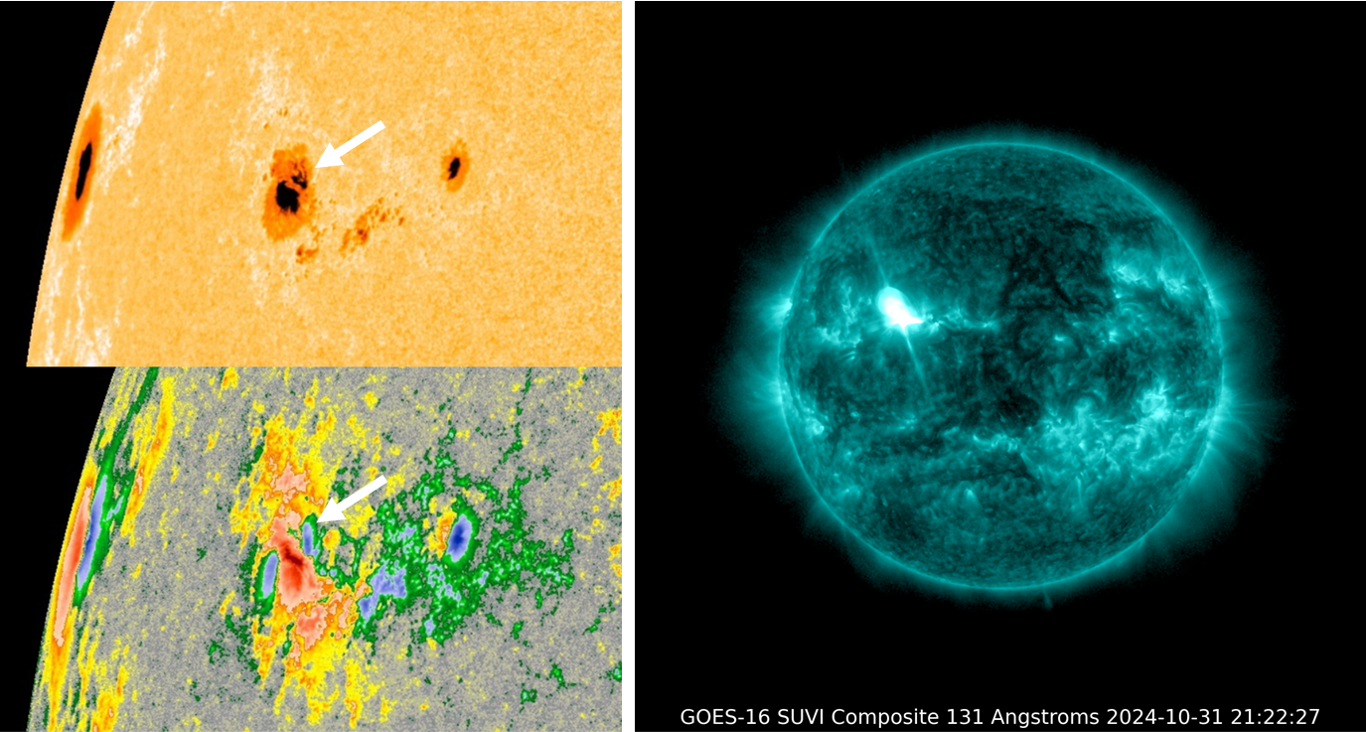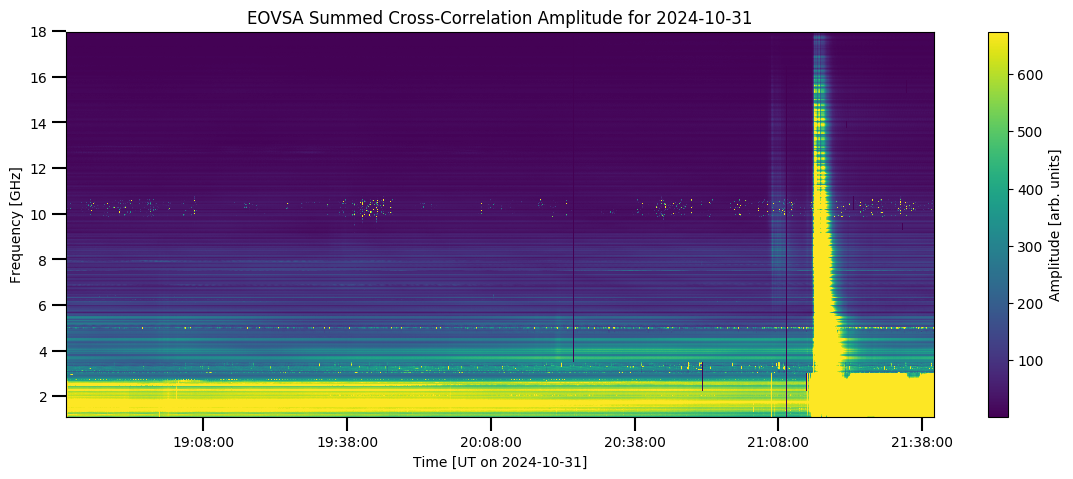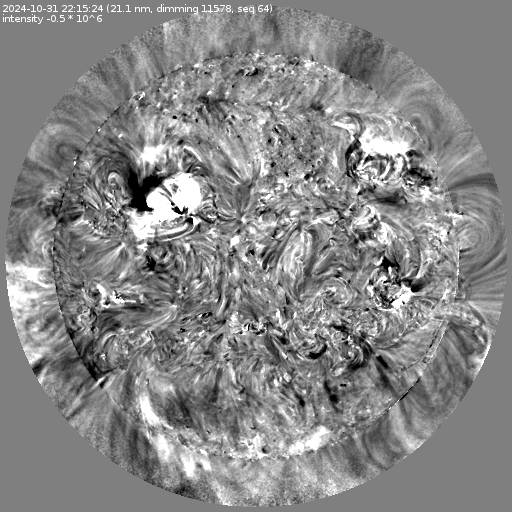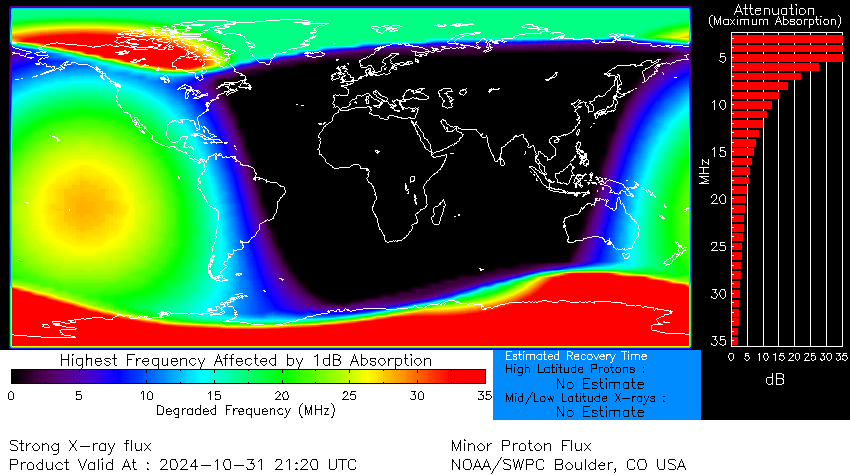An X2.0 flare was observed from NOAA 3878, a sunspot group of which the main sunspot contained a magnetic delta structure for several days now. This can be seen in the annotated comparison between a white light image (upper left) and a magnetogram (lower left) of this region on 29 October. Notice opposite magnetic polarities (red and blue colors) within the same, distorted penumbra of the main spot. NOAA 3878 was also the source of am M7 flare just a day ago, but a coronal mass ejection (CME) was not associated with that flare. The X2 flare peaked on 31 October at 21:20UTC (GOES). The image underneath on the right shows the outlook of the flare in extreme ultraviolet (EUV) near the time of its maximum (GOES/SUVI).

The greater than 10 MeV proton flux is still above the 10 MeV alert threshold, recovering from the moderate proton event associated with the X1.8 flare from 26 October (STCE newsitem). The entire radio frequency band was affected by radio emission from the flaring event, as can be seen from the radio spectrogram obtained at Owens Valley (EOVSA , the Expanded Owens Valley Solar Array). The NOAA/USAF) radio network . reported a strong disturbance of 28.000 sfu at GNSS (GPS, Galileo,...) frequencies. For comparison, during the previous X-class event, this frequency was only mildly affected (maximum of 1400 sfu).

There are for the moment no coronagraphic images available yet. There are also no reports in of a Type II burst (hinting at an associated CME), but Solar Demon - an SIDC image analysis tool - seems to show some coronal dimming near the blast site, which may hint on some material being ejected into space. A difference image comparing the Sun's outlook in EUV (SDO/AIA 211) before the event and near the time of the flare's peak can be found here. The coronal dimming can be seen as the blackish area near the flare location (bright). Standing-by for images and further analysis by the SIDC forecaster.

The X-class flare affected the lower frequency portion of the High Frequency communication band (HF Com ; 3-30 MHz) mainly over the Pacific Ocean and the east coast of the Americas.. This can be seen on the D-RAP map underneath (NOAA/SWPC). An advisory to civil aviation has been issued (PECASUS). The red contours over the poles reflect the impact of the still ongoing proton event on High Frequency communication (HF Com ; 3-30 MHz) over this area. Also here, PECASUS continues to send advisories on a regular base.






